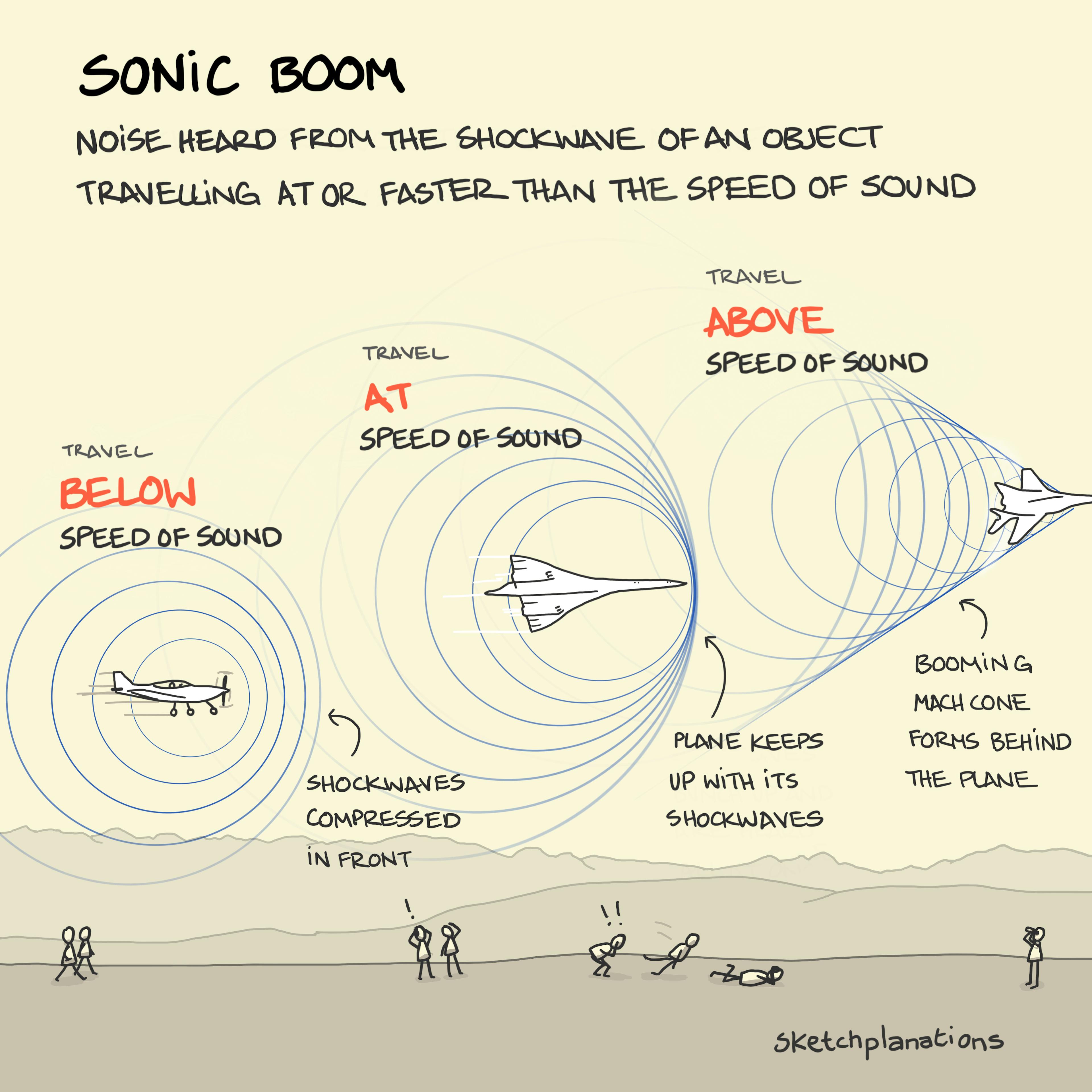Sonic boom

- Prints
- Copied!
👇 Get new sketches each week
Sonic booms are the noise heard when an object travels at or faster than the speed of sound.
As an object travels through the air it pushes air out of the way creating a shockwave — like the wake of a boat. If you were traveling fast in a plane you can imagine that as the shockwaves move away from you at the speed of sound (around 340 m/s), because you're traveling too, the ones in front of you compressed together a little.
As you reach the speed of sound, you're now traveling as fast as the shockwaves and they all bunch up forming a strong pressure wave.
An object traveling faster than the speed of sound leaves its shockwaves behind it in a cone-shape called a Mach cone after Ernst Mach.
To an observer on the ground the sudden change in pressure as the pressure wave passes is experienced as a loud boom.
There's quite a lot of subtlety to sonic booms and we're still researching technology to reduce them to make faster than sound travel less, well, noisy.

